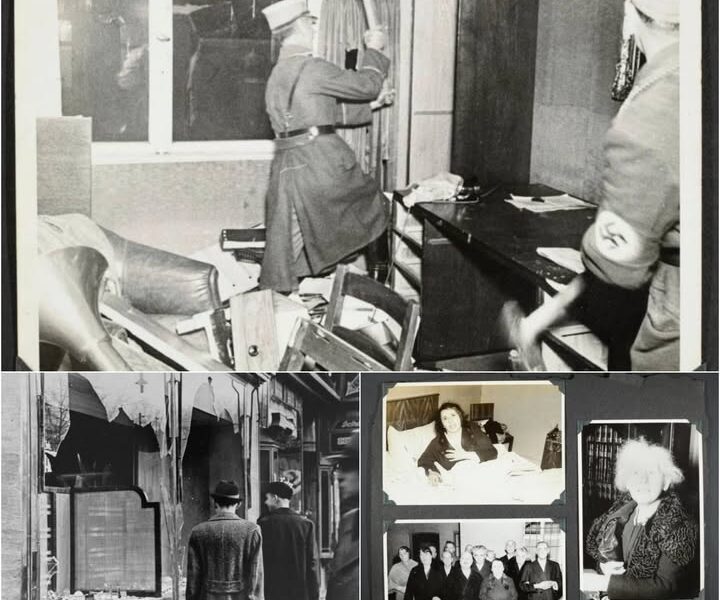KRISTALLNACHT UNMASKED: Never-Before-Seen Photos Expose Nazi Brutality the World Ignored
In November 1938, the streets of Germany and Austria became battlegrounds for a meticulously orchestrated assault on Jewish communities known as Kristallnacht, or the “Night of Broken Glass.” Recently uncovered photos, discovered in the possession of a Jewish-American soldier, offer a haunting glimpse into this pogrom, revealing its calculated brutality. Released by Yad Vashem, these rare images capture the destruction of Jewish businesses, homes, and synagogues, as well as the suffering of victims, challenging the Nazi narrative of a spontaneous uprising. This article explores the significance of these photos, their historical context, and their journey to Yad Vashem, providing a powerful narrative for reflection and discussion on social media.
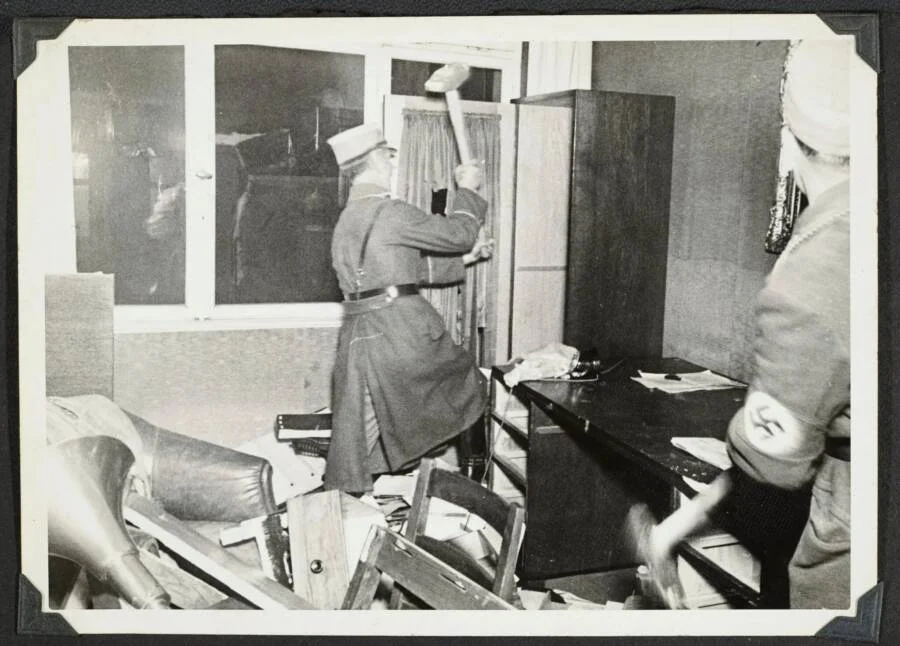
The Horror of Kristallnacht
Kristallnacht, spanning November 9-10, 1938, marked a turning violent escalation in Nazi persecution of Jews. Mobs, orchestrated by Nazi officials, ransacked Jewish-owned shops, homes, and businesses, burning approximately 1,400 synagogues to the ground. The violence left 92 people dead and 30,000 Jewish men arrested, many sent to concentration camps like Dachau. The newly released photos, taken in the Bavarian cities of Fürth and Nuremberg, vividly depict this devastation. Images show SS officers gathering books for burning, fires raging inside synagogues, and victims—a woman in bed, a man with blood streaming down his face—facing the camera in shock. These scenes, captured with chilling proximity, underscore the deliberate cruelty of the attacks, contradicting the Nazi claim that Kristallnacht was a spontaneous outburst of public anger.
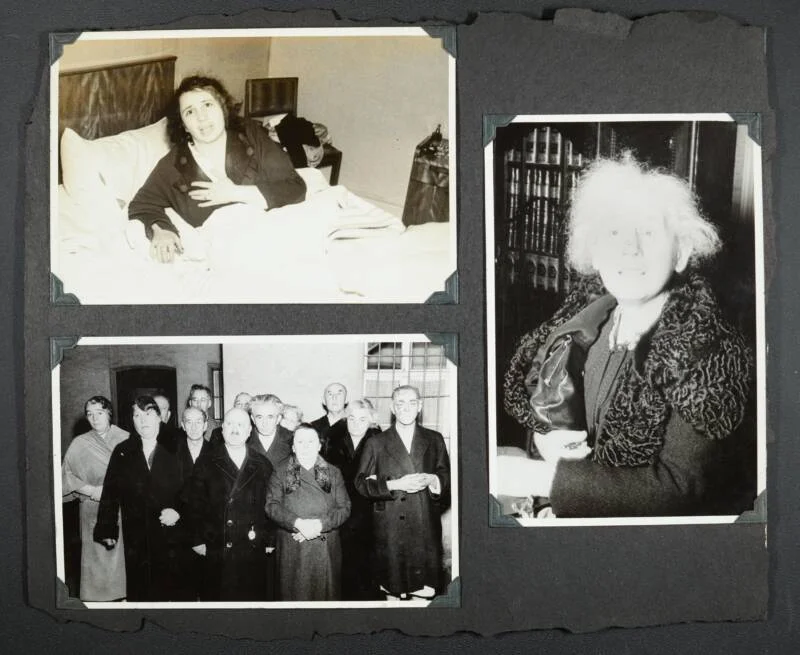
Evidence of a Planned Atrocity
Yad Vashem’s analysis of the photos provides compelling evidence that Kristallnacht was a coordinated Nazi operation. Jonathan Matthews, Head of the Photography Section at Yad Vashem Archives, notes that the “extreme close-up nature” of the images suggests photographers were embedded in the events, likely in a professional capacity to document the destruction. This proximity, combined with the presence of men in swastika armbands, refutes the Nazi propaganda that portrayed the pogrom as unplanned. Toby Simpson, director of the Wiener Holocaust Library, told the Washington Post that the photos’ rarity stems from the Nazis’ reluctance to openly link their uniformed officers to such crimes, as it clashed with their desired image. The photos, showing organized destruction and humiliation, reveal the systematic nature of the Nazi agenda, exposing their intent to terrorize and dehumanize Jewish communities.
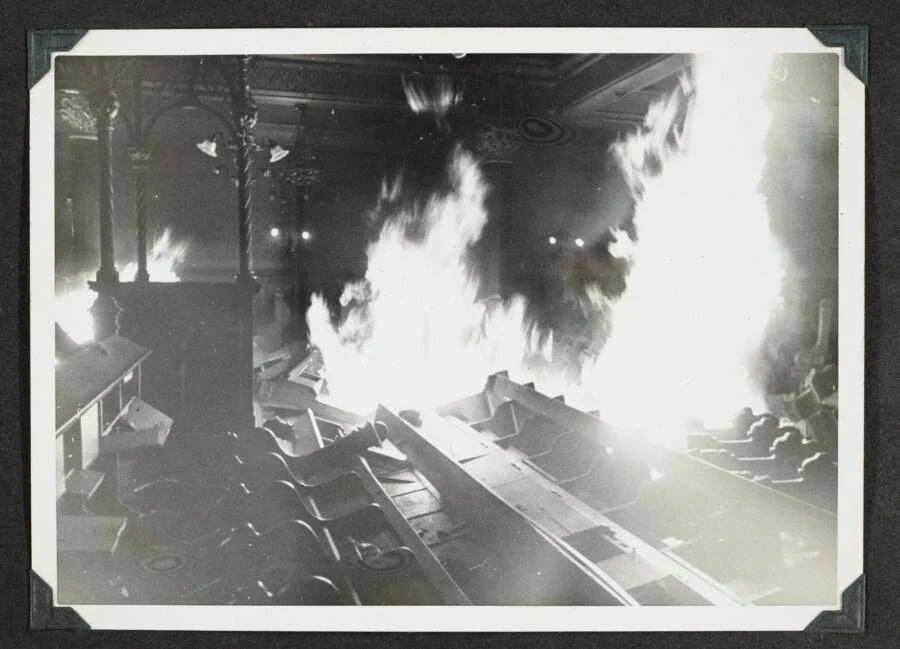
The Intimate and Disturbing Imagery
Unlike many known Kristallnacht images, which often capture outdoor destruction, these photos offer an intimate perspective, including rare indoor shots. Matthews told the Associated Press that these images provide a “more intimate image of what’s happening,” amplifying their emotional impact. The photos’ visceral nature—depicting stunned victims, burning sacred spaces, and Nazi officers methodically collecting Jewish books—evokes a profound sense of cruelty, as Simpson noted. The image of a synagogue ablaze, captured in stark detail, stands as a testament to the desecration of Jewish culture. These photos are not just historical records but emotional touchstones, forcing viewers to confront the human cost of Nazi violence. Their disturbing clarity makes them particularly poignant for modern audiences, sparking reflection on the horrors of unchecked hatred.
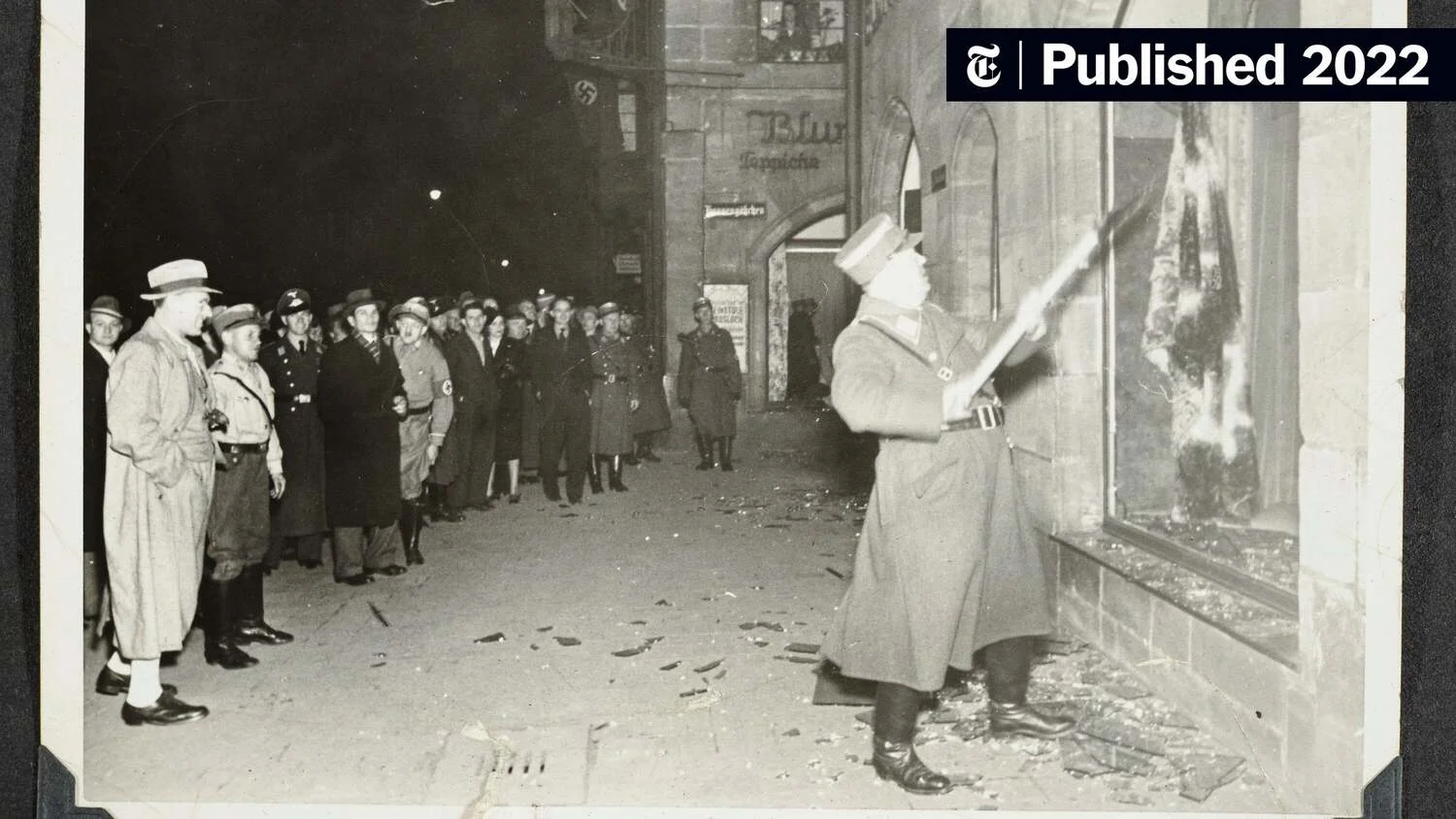
The Mysterious Journey of the Album
The photos’ path to Yad Vashem adds a layer of intrigue. Discovered in an album owned by a Jewish-American soldier who served in counterintelligence during World War II, the images’ origins remain unclear. The soldier, whose name was withheld, never discussed his wartime experiences, and his family found the album after his death while clearing his home. His granddaughter, Elisheva Avital, described the discovery as feeling “as if a hole had been burned through my hands,” highlighting the images’ emotional weight. Donated to Yad Vashem through its “Gathering the Fragments” project, which collects Holocaust-era artifacts, the album’s journey from Nazi photographers to a U.S. soldier to an archive in Israel remains a mystery. This enigmatic provenance enhances the photos’ significance, suggesting they were preserved as evidence of atrocities, possibly by someone determined to expose the truth.
A Lasting Testament to Nazi Crimes
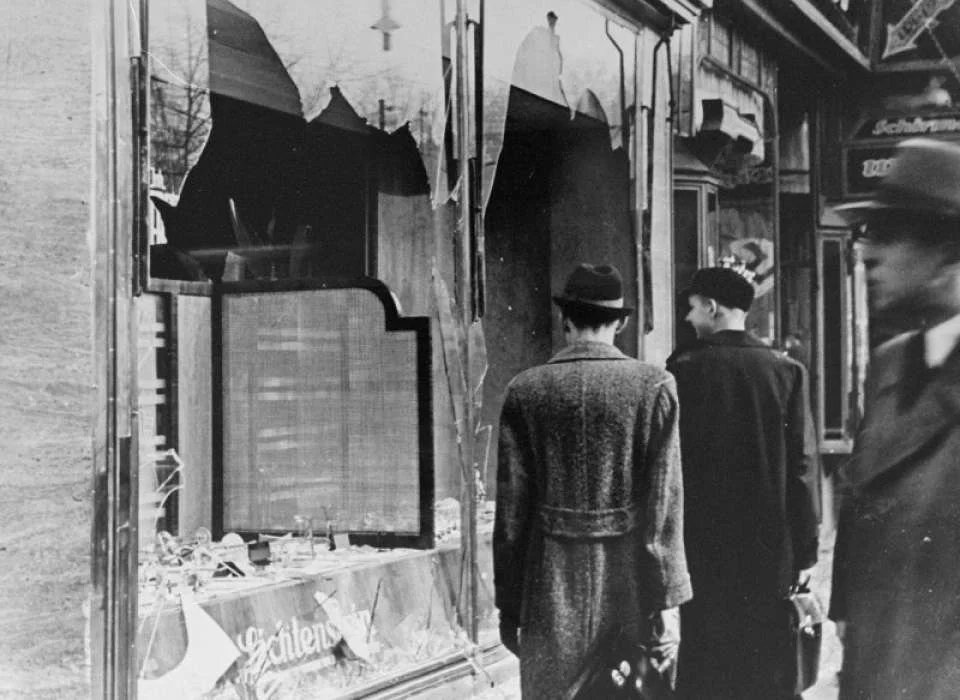
The release of these photos by Yad Vashem serves a critical purpose: to bear witness to the atrocities of Kristallnacht and the broader Holocaust. Dani Dayan, Yad Vashem Chairman, emphasized their importance, stating, “These photographs clearly show the true intention of the Nazis and the systematic and deliberate lengths they would go to in order to accomplish their murderous agenda.” The images stand as “everlasting witnesses” to the terror inflicted on Jews, reinforcing the need to remember and educate. With an estimated 6 million Jews murdered in the Holocaust, Kristallnacht was a precursor to the genocide that followed, signaling the Nazis’ escalating violence. For social media audiences, these photos are a sobering reminder of the consequences of hatred and the importance of preserving historical evidence to combat denialism.
The newly uncovered Kristallnacht photos, released by Yad Vashem, offer a chilling window into one of the darkest chapters of the Holocaust. Capturing the calculated destruction and suffering of November 1938, these images expose the Nazi lie of a spontaneous pogrom, revealing a meticulously planned assault on Jewish life. Their intimate perspective and mysterious journey from a Jewish-American soldier’s album to Yad Vashem amplify their impact, making them a powerful tool for education and reflection. For social media audiences, this story is a call to confront history’s painful truths and honor the victims by ensuring their stories endure. As we share these images, we recommit to remembering the atrocities of Kristallnacht and the resilience of those who survived.
